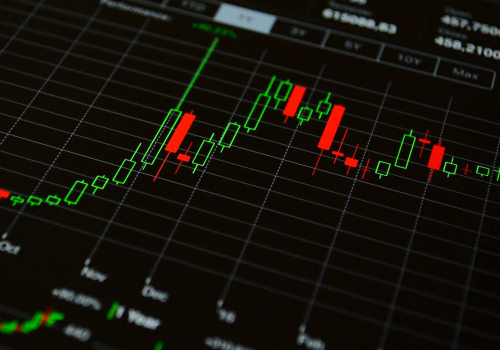Creating rules for entry and exit in Forex trading systems is one of the most important elements of any successful trading system. With the right rules, traders can maximize profits and minimize losses. But how do you go about creating these rules? In this article, we'll look at the fundamentals of rule-making for Forex trading systems, including the types of rules to consider, the best practices to follow, and some tips for getting started with your own rules. We'll also discuss the importance of testing and backtesting your rules before executing them in the real world.
So, let's dive in and get started on creating profitable trading systems!The first step in creating rules for entry and exit is to assess the market. Traders need to identify trends, support and resistance levels, and other factors that can influence the price of a currency. This can be done by analyzing historical data or using technical analysis tools such as moving averages, oscillators, and chart patterns. Once this assessment is complete, traders can then create their own trading system that incorporates the desired entry and exit rules. When designing entry rules, traders should consider factors such as:
- Risk tolerance: How much risk is the trader willing to take?
- Price action: What type of price action is expected?
- Timeframe: What timeframe should be used for entering and exiting positions?
- Position size: What size of position should be taken?
- Stop loss: What is the maximum loss that can be sustained before exiting a position?
- Profit target: What is the desired profit target?
- Trailing stop loss: How far will the stop loss be moved after entering a position?
- Timeframe: What timeframe should be used for entering and exiting positions?
- Position size: What size of position should be taken?
- Stop loss: What is the maximum loss that can be sustained before exiting a position?
This is important in order to make sure that the risk/reward ratio is acceptable. It is also important to remember that entry and exit rules are just one part of a successful trading system. Other components such as money management, position sizing, risk management, and psychological discipline are also important.
Creating a Trading System
Once traders have identified their entry and exit rules, they can begin to create their trading system. This involves backtesting the system to ensure that it performs as expected.Backtesting involves testing the system over historical data to see how it would have performed in past markets. This can help traders identify any potential issues with their system or make adjustments if necessary. Additionally, traders should consider using paper trading to further test their system before putting real money on the line.
Conclusion
Creating Entry and Exit Rules for Forex Trading SystemsCreating entry and exit rules for Forex trading systems is an important part of successful trading. By assessing the market, setting realistic goals, and managing risk, traders can create a profitable trading system that meets their needs.A good trading system should take into account market conditions, risk tolerance, and personal preferences in order to create an effective set of rules for entering and exiting positions. These rules should be tailored to the trader’s individual needs and objectives, helping them to maximize their chances of success. The key to creating successful entry and exit rules for Forex trading systems is to understand the market, manage risk, and to have realistic goals. By following these steps, traders can create a profitable system that will help them to generate consistent returns over the long-term.
Risk Management
Risk management is an essential part of creating a successful trading system. It involves setting limits on losses and gains, as well as determining the amount of money that should be risked per trade.Risk management also involves setting realistic goals and expectations for the trading system. By limiting losses and gains, traders can ensure that their Forex trading systems are not exposed to excessive risk. Additionally, setting realistic goals and expectations allows traders to better manage their expectations and make more informed decisions. When creating rules for entry and exit, it is important to consider risk management in order to maximize profits and minimize losses. Traders should set reasonable limits on the amount of money they are willing to risk per trade.
Additionally, traders should identify their trading goals and objectives, and determine how much money they are willing to lose in a single trade before exiting the market. By setting these limits, traders can help ensure that their Forex trading systems are not exposed to excessive risk. In addition to setting limits on losses and gains, it is also important to consider the effect of different market conditions on the performance of the trading system. For example, during periods of high volatility, traders should reduce their position size in order to limit losses. Conversely, during periods of low volatility, traders can increase their position size in order to take advantage of potential opportunities. When creating rules for entry and exit, it is important to consider risk management in order to maximize profits and minimize losses.
By setting reasonable limits on losses and gains, as well as setting realistic goals and expectations for the trading system, traders can help ensure that their Forex trading systems are not exposed to excessive risk. Creating entry and exit rules is a key part of developing a successful Forex trading system. These rules help traders decide when to enter and exit positions as well as set limits on losses and gains. By assessing the market, setting realistic goals, and managing risk, traders can create a profitable trading system that meets their needs. To maximize the potential of a Forex trading system, traders need to stay informed of market conditions, understand the risks involved, and create an entry and exit strategy that is tailored to their individual goals. By taking the time to develop the right entry and exit rules, traders can increase their chances of achieving long-term success in the Forex market.












Leave Reply